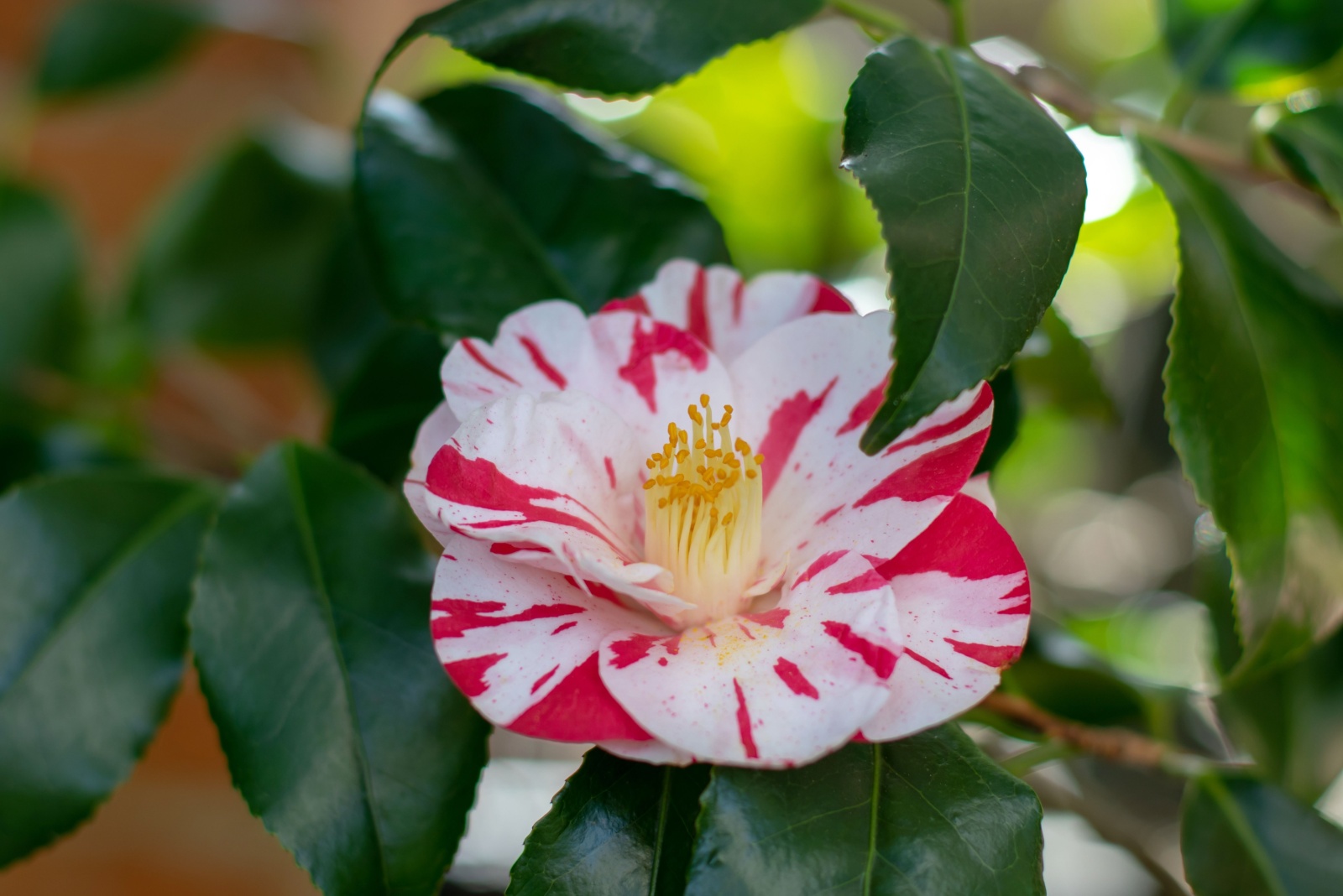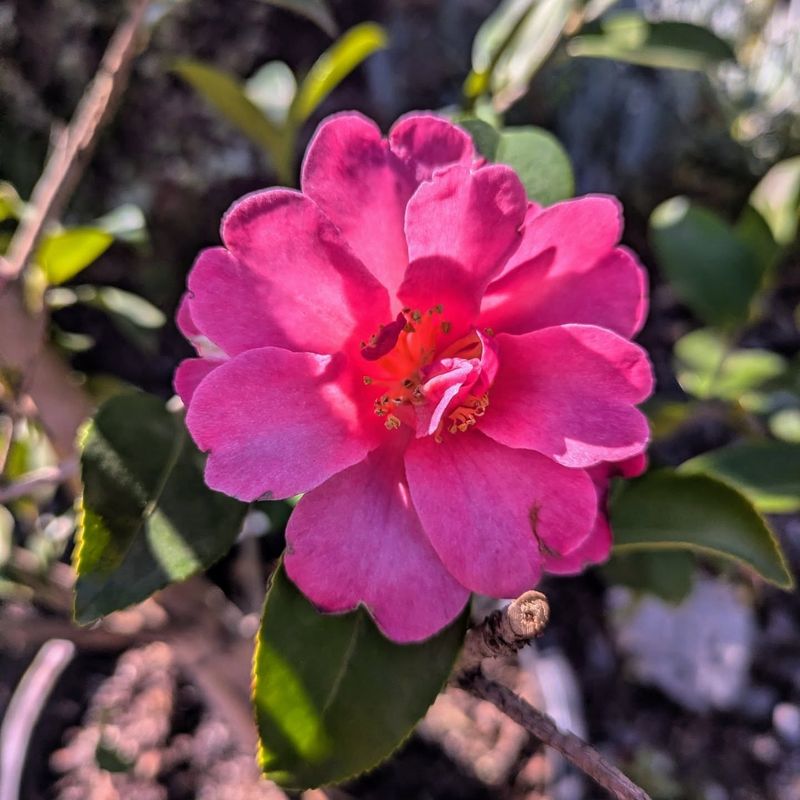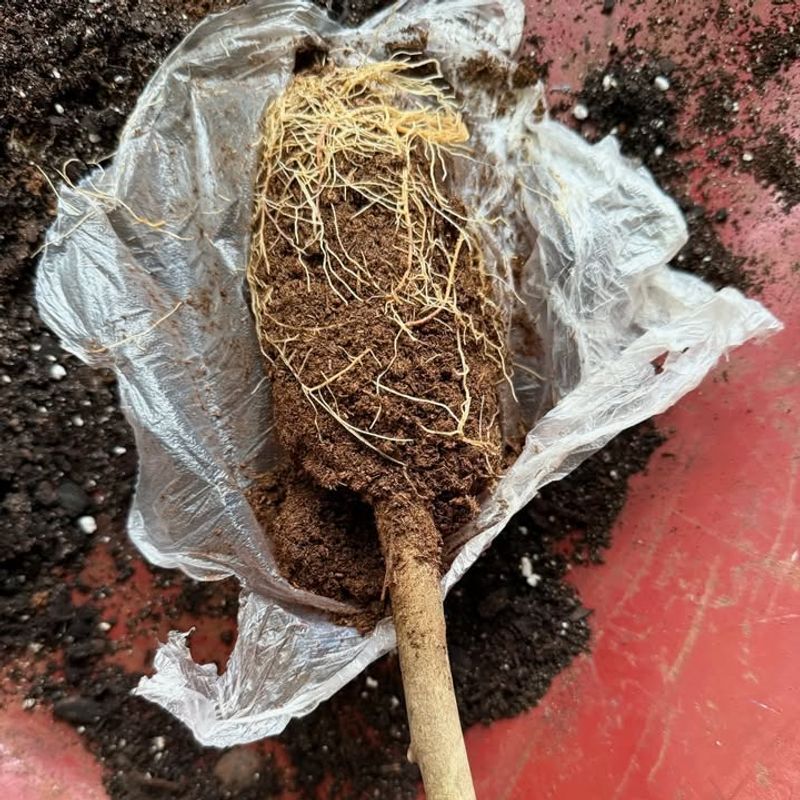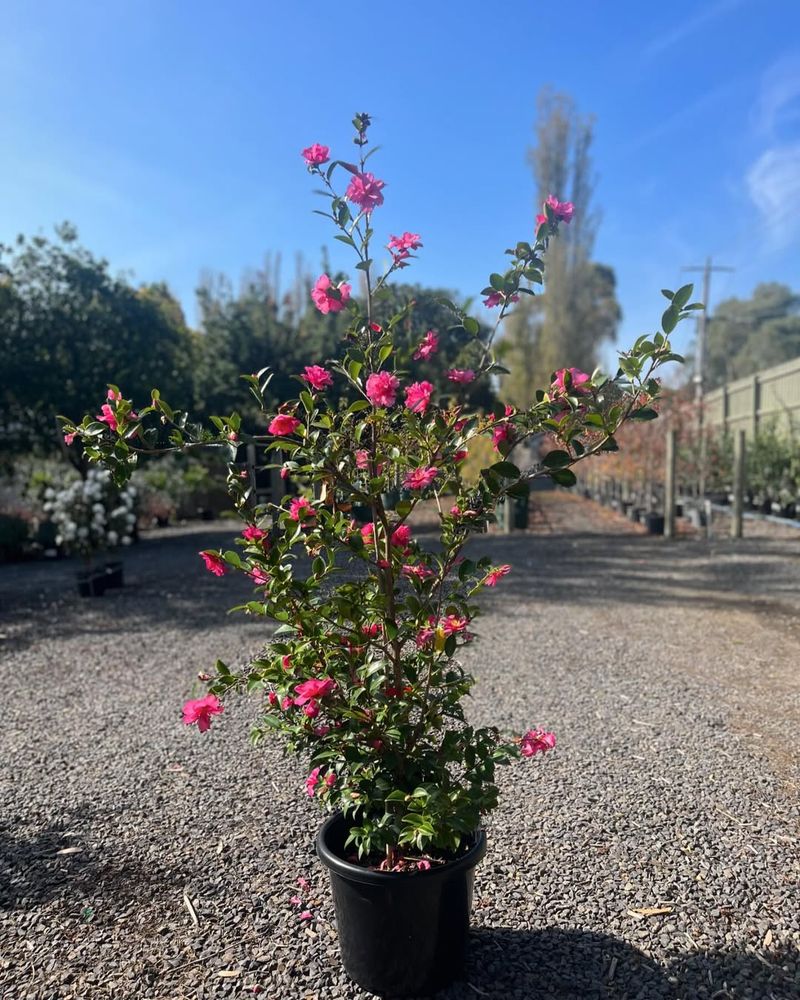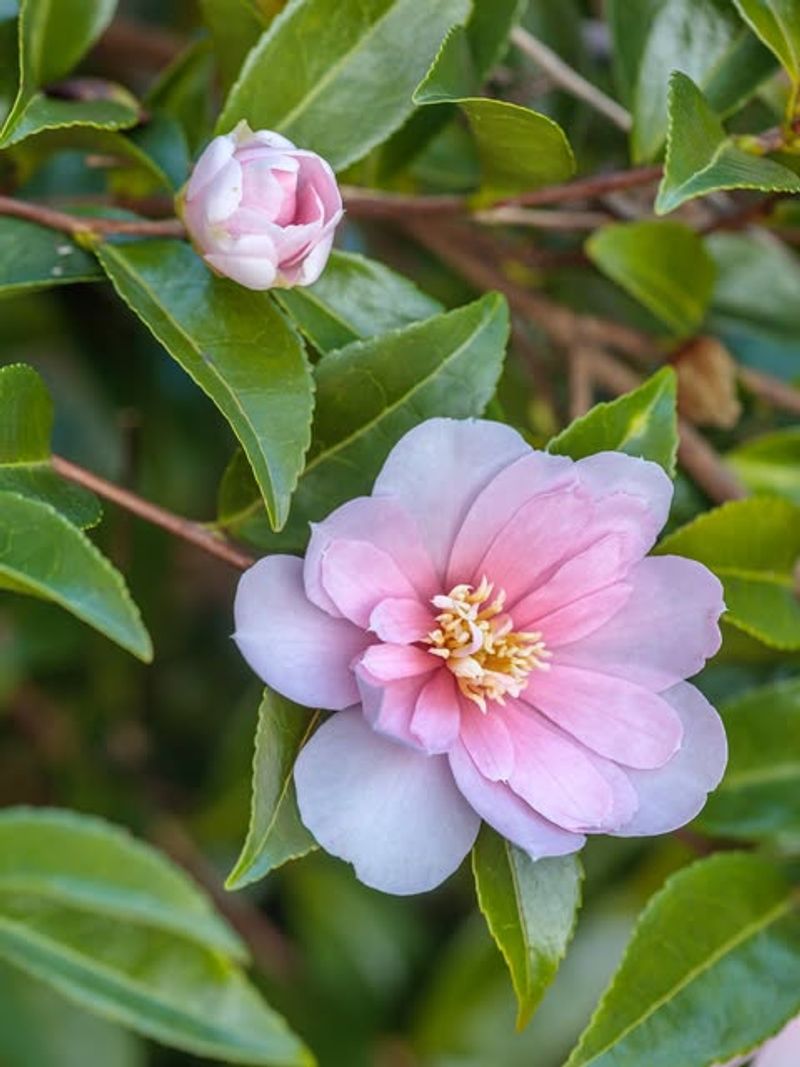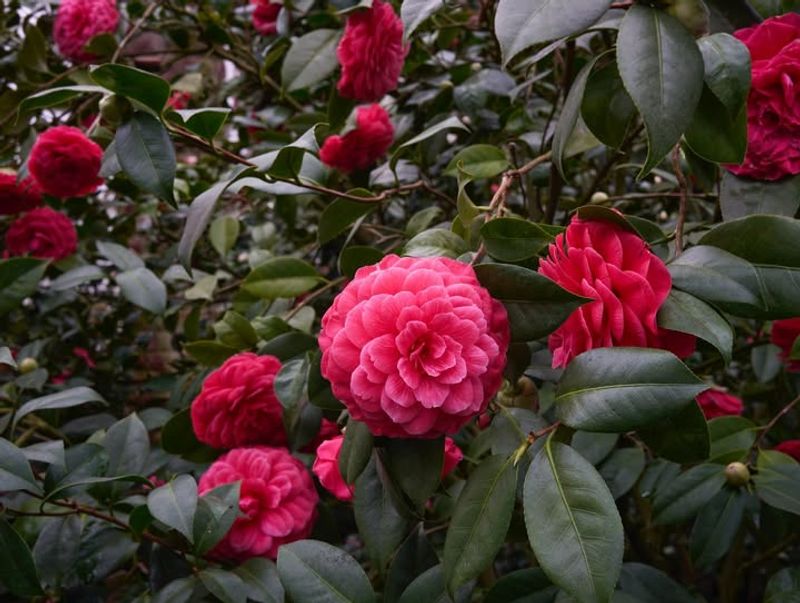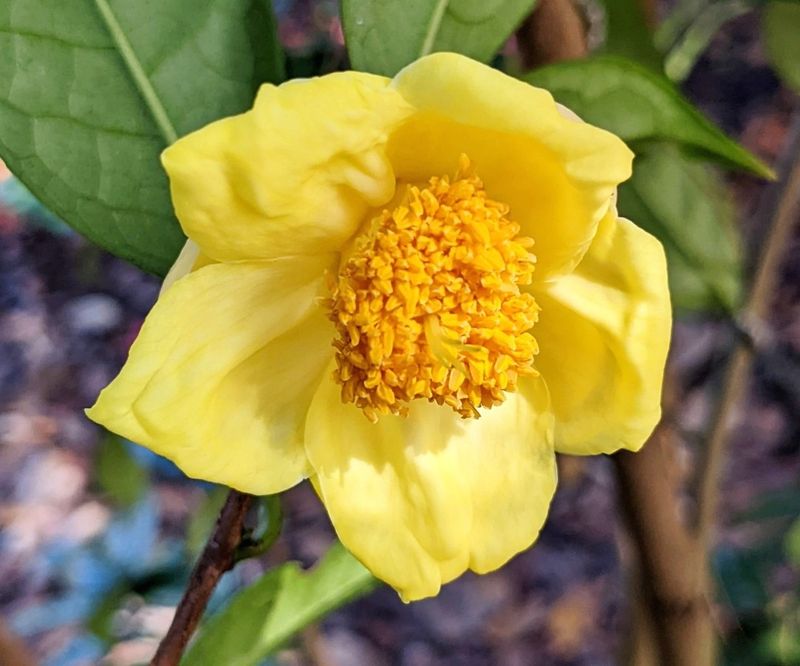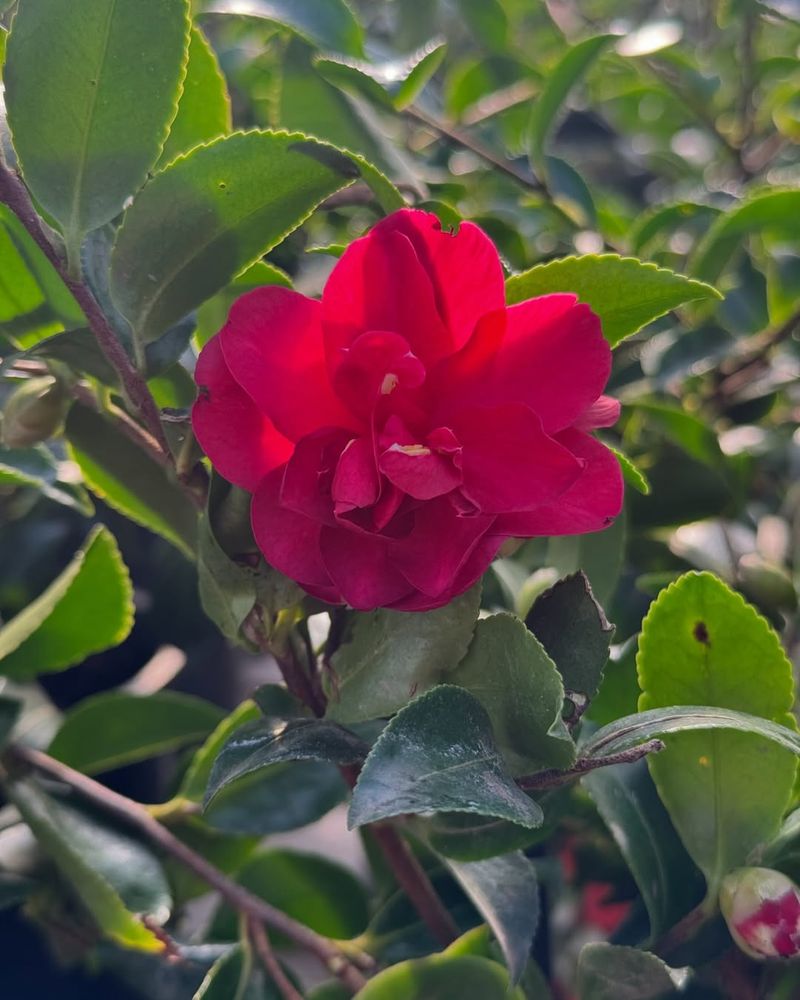Winter may be camellia season in Georgia, but picking the right one isn’t as simple as grabbing the prettiest bloom on the shelf.
Many gardeners learn the hard way that a beautiful plant in the store can turn into a headache at home if the wrong variety, size, or bud stage slips into the cart.
A few small shopping missteps can mean fewer flowers, weaker growth, or a shrub that never quite settles in. Avoiding these common pitfalls helps Georgia gardeners bring home camellias that thrive long after winter’s chill fades.
1. Ignoring Cold Hardiness Zones
Georgia spans multiple hardiness zones, and not every camellia variety survives everywhere in the state. Northern counties experience much colder winters than coastal areas, so checking zone ratings is essential.
A camellia labeled for zone 8 might freeze in zone 7. Always match the plant tag information with your specific location before purchasing.
Garden centers sometimes stock varieties better suited for warmer regions, so do your homework first.
2. Buying Plants In Full Bloom Only
Those gorgeous blooming camellias catch everyone’s eye at the nursery, but they might not be your best choice. Plants putting all their energy into flowers may struggle after transplanting.
Camellias with mostly buds instead of open flowers often establish better in your garden. They’ll save their strength for root development rather than maintaining showy blooms.
Remember that winter-blooming varieties will flower again next season, so patience pays off.
3. Overlooking Root-Bound Specimens
Pull the pot away slightly to check the roots before buying any camellia. Roots circling densely around the container edge indicate the plant has been sitting too long.
Root-bound camellias struggle to spread their roots properly after planting, leading to stunted growth. These plants may never reach their full potential, even with excellent care.
Healthy roots should be visible but not twisted or matted together in thick spirals.
4. Selecting The Wrong Mature Size
That cute little camellia might look perfect now, but what happens in five years? Many varieties grow into massive shrubs or small trees that overwhelm garden beds.
Read the plant label carefully to learn the expected mature height and width. Consider your available space and nearby structures before committing.
Dwarf varieties work better for small yards, while larger types need plenty of room to spread naturally.
5. Forgetting About Sun Requirements
Camellias have specific light needs that vary by variety, and getting this wrong causes major problems. Some types tolerate full Georgia sun, while others prefer dappled shade under trees.
Too much direct sunlight scorches leaves and reduces flowering. Too little light creates leggy growth and disappointing blooms.
Ask nursery staff about sun tolerance before purchasing, and honestly assess the light conditions in your intended planting spot.
6. Skipping The Leaf Inspection
Healthy leaves tell you everything about a camellia’s condition, yet shoppers often skip this crucial step. Look closely for yellow spots, brown edges, or unusual discoloration.
Pests like scale insects and spider mites hide on leaf undersides, creating future headaches. Disease symptoms may appear subtle at first but spread rapidly after planting.
Choose plants with deep green, glossy foliage and no visible damage or pest activity.
7. Choosing Varieties Prone To Petal Blight
Petal blight is a devastating fungal disease that ruins camellia flowers in Georgia’s humid winters. Some varieties resist this problem better than others.
Flowers develop ugly brown spots and quickly turn mushy when infected. Once established in your garden, the fungus returns year after year.
Research resistant cultivars or ask experienced local gardeners which varieties perform well in your area before making selections.
8. Impulse Buying Without Research
Walking into a nursery without a plan leads to expensive mistakes. That pretty pink camellia might clash with your garden’s color scheme or bloom at the wrong time.
Different varieties flower from October through April, so timing matters. Creating a bloom sequence requires planning which types to purchase.
Make a list of desired characteristics before shopping, including color, bloom time, size, and growing requirements for your specific location.
9. Neglecting Soil pH Compatibility
Camellias absolutely require acidic soil to thrive, typically between pH 5.5 and 6.5. Georgia’s red clay often has the wrong pH level for these acid-loving plants.
Alkaline soil causes iron chlorosis, turning leaves yellow while veins stay green. This nutritional problem weakens plants and reduces flowering dramatically.
Test your soil before buying camellias, and be prepared to amend it properly or choose a different planting location.
10. Purchasing From Unknown Sources
Roadside stands and random sellers all over Georgia may offer cheap camellias, but you’re gambling with quality. These plants might carry diseases, pests, or incorrect variety labels.
Reputable nurseries guarantee their stock and provide accurate information about each plant. They also offer advice and support if problems arise later.
Spending a few extra dollars at established garden centers protects your investment and ensures you’re getting healthy, properly identified plants.
11. Ignoring Watering Needs Before Purchase
Check the soil moisture in the pot before buying any camellia. Bone-dry plants have suffered stress that may affect their future performance.
Conversely, waterlogged soil suggests poor drainage or overwatering, which damages roots. Either extreme indicates the plant hasn’t received proper care.
Soil should feel evenly moist but not soggy when you press your finger into it, signaling the nursery maintains good watering practices.
12. Buying Too Late In The Season
Winter planting in Georgia gives camellias time to establish roots before summer heat arrives. Waiting until late winter or early spring reduces this critical adjustment period.
January and February shoppers face picked-over selections with fewer healthy specimens available. The best plants sell out early in the season.
Shop for camellias in November and December when nurseries receive fresh stock and you have the widest variety to choose from.
13. Disregarding Fragrance Options
Many gardeners in Georgia don’t realize that some camellia varieties offer wonderful fragrances while others have no scent at all. Missing this opportunity means losing a delightful garden feature.
Fragrant types like Camellia sasanqua ‘Setsugekka’ or Camellia lutchuensis hybrids perfume winter air beautifully. Plant them near walkways or windows where you’ll enjoy the aroma.
Always ask about fragrance when shopping, and smell the blooms yourself if possible.

